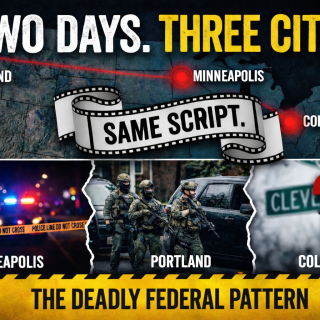Advertisement
Reading the fascinating, apparently counter-intuitive report “Parched Peru is restoring pre-Incan dikes to solve its water problem” (Simeon Tegel, Washington Post, Dec. 12, 2022) helped me to crystalize and partially redirect more than 50 years of critical thinking as a scholar.
As a comparative historian, I taught, lecture, and write about the centrality of contradictions across many topics, in particular, the past and present of literacy, children and youth, cities, and interdisciplinarity. Among my books on those subjects are, for example, The Literacy Myth (1979 and 1991), The Legacies of Literacy (1987), and Searching for Literacy (2022); Conflicting Paths: Growing Up in America (1995); The Dallas Myth, 2008); Undisciplining Knowledge: Interdisciplinarity in the Twentieth Century (2015).
In recent years and increasingly today, I am struck by how often the renewed, accelerated, and transformed centrality of contradictions. Of special importance is how the interrelationships of climate change, global warming, simultaneous and flooding, glacier melting, and environmental devastation lead more or less directly to an unending series of physical discoveries and new understandings across humans and other animals and natural histories.
Scientific reports across disciplines/fields of study arrive almost daily. I hear them first in early mornings on BBC rebroadcasts on NPR, and I read synopses of research reports in the pages of the New York Times and Washington Post, occasionally following up online in Nature, Scientific American, or National Geographic.
Many new findings are stunning. For example, “Researchers claim that the behavior of a massive extinct herbivore, the Steller’s sea cow” may be the “missing mammal” that “shaped California’s kelp forest.” As a result, that knowledge “might inform conversation efforts of threatened ecosystems today” (Oliver Whang, New York Times, Dec. 5, 2005).
Little different are reports about Peruvian pre-Incan dikes. With Lima’s water supply extremely stressed, veterinary technician Javier Obispo reflects, “Twenty years ago, the soil would be damp. There used to be waterfalls. Now there just isn’t enough pasture anymore.” But using the ancient technology of the dikes, “the water is beginning to trickle, for perhaps the first time in centuries,” the reporter states.
Many “discoveries” are simultaneously tardy but at the same time unsurprising. At every week, I read summaries that confirm and extend our understanding of “animal intelligence.” They repeatedly refute the unreflective anthropomorphic presumption that such a concept is a contradiction in terms.
Anyone, especially young humans, who has lived with or raised a pet, spent time on a farm, or frequented zoos or wildlife preserves knows better. (See, for example, Kim Kavin, “Thinking about how dogs think,” Washington Post, Aug. 12, 2021; Emily Anthes, “Brains, Brawn or Both: What Drove the Creation of Modern Day Dog Breeds?” New York Times, Dec. 8, 2022)
Despite Darwin, Huxley, and almost two centuries of evolutionary biological sciences (plural), normative science lags behind much popular “intelligence.” In other words, it evolves less, and more slowly.
Human scientists can be slow learners until they face the combined literally existential threats to animal, humans, and other forms of life on earth, present and future. Is it contradictory that we learn this from evidence of the past?
Of course, surprising numbers of adults refuse to accept either evolution (which is not simply “a theory”) or either non-human or multiple intelligences. Their rejection sometimes comes with deadly consequences.
Distantly echoing Charles Darwin’s observations on his voyages, we rediscover--or discover more broadly, deeply, and convincingly—intelligence(s) across every living species: from domestic dogs and cats to common and rare birds, fish, insects, and others both living and extinct.
Among the contradictions is how closely the processes of asking questions, making discoveries, and confronting new interpretations follow directly from confronting—on all levels—environmental crises that inexorably uncover “remains” that we could not “see” but in many cases did or should have foreseen or anticipated.
What we learn about global warming and ever-changing geographical forms, we should not be overly surprised when new access by physical change reveals: “Oldest Known DNA Offers Glimpse of a Once-Lush Artic.” One of the scientists notes, “finding more DNA may help them better understand how human-driven change will alter the Arctic.” Continuing education and major warming combine inseparably. (See Carl Zimmer, “Oldest Known DNA Offers Glimpse of a Once-Lush Artic,” New York Times, Dec. 7, 2022)
The history of life—pre-human and human--cannot be extracted from biological and geographic life forms. Environmental change constantly uncovers new “remains” of life and lives. The equivalents of a new Stonehenge emerge like the beat of an archeologist’s trowel. We can only hope humanity survives long enough to learn from them.
It is also a curious process of incomplete scholarly evolution. Consider reports of the findings of “A ‘Stunning’ 1,300-Year-Old Gold Necklace Unearthed in England” (Michael Levenson, New York Times, Dec. 7, 2022) The presumed jewelry appeared in excavations for a planned housing development. In an apparent gravesite, “The 30 pendants and beads that once formed the elaborate necklace were made from Roman coins, gold, garnets, glass and semiprecious stones.”
A major fault line in interdisciplinary interpretation appears in the discoverers’ presumption that the necklace “may have belonged to a woman who was an early Christian leader.” There is no historical reason that confirms that the owner or bearer was not male or that she/he was Christian, other than modern assumptions by non-historians. Neither necessarily follows. Neither evolution of understanding nor of life or landscape is ever constant or consistent.
It is at once frightening and enlightening how much we may learn when we actually look at environmental change, how that facilitates our abilities to see, and how the threat of extinction forces us to look, see, and grapple with past and possible futures. We have little choice but to admit the limits of our consciousness in grasping time and its inseparable changes. We can see how closely our beliefs shape how we think the world may work.
Without being hyperbolic, may I ask if the real dangers of ending, or almost completely remaking lives as we know them, is required for humankind to face its own possible futures anew and meaningfully? We cannot escape those contradictions. But can we survive them?
Are we forced to confront mass extinction in order to take our own and our larger world seriously? That contradiction is central to humanity past and present. What does it portend for the future…?
-------------------------------------------------
Harvey J. Graff is Professor Emeritus of English and History at The Ohio State University and inaugural Ohio Eminent Scholar in Literacy Studies. Author of many books, Searching for Literacy: The Social and Intellectual Origins of Literacy Studies was published by Palgrave Macmillan in 2022. My Life With Literacy: The Continuing Education of a Historian is forthcoming. He thanks Steve Rissing and Robert Bradley for years of conversation.



